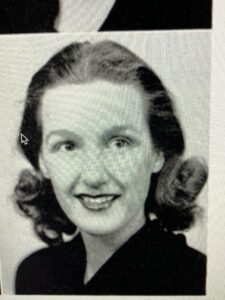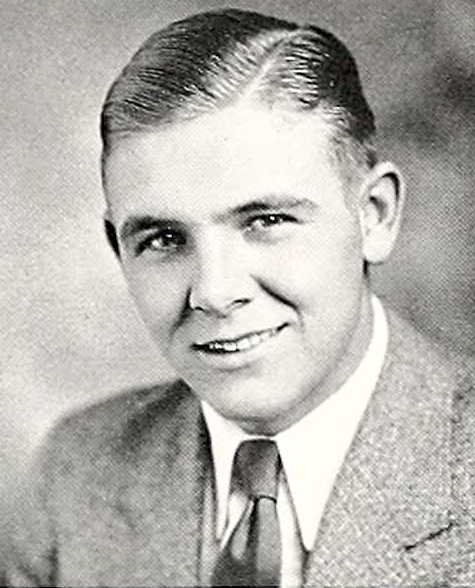by Hank Nuwer, Cordova Times
Sara Burleson Dunn’s world came crashing down on May 16, 1944, when a U.S. naval air station dirigible slammed into a hangar on a training mission and plunged 258 feet to a concrete runway.
The tragedy occurred at Lakehurst, New Jersey, the site of the tragic 1937 explosion that destroyed the LZ 129 Hindenburg airship.
Among six officers and four enlisted men killed in the mishap was Lieutenant William Claude (Jack Dunn) Jr., Sara’s husband of three years. An investigation blamed a miscalculation by the student pilot that shredded the air bag. One enlisted man survived the accident.
The two native Tennesseans connected while students at East Tennessee State Teachers College. Jack had been president of the 1939 Senior Class and voted “Most Handsome” in a campus poll.
She was a 1940 graduate with dark hair modeled after the movie starlets of the period. She had a love for adventure and was head of the intramural hiking club. She also was a joiner who belonged to a sorority, the student newspaper, a drama club and international relations club.

The two taught school until Jack enlisted to serve his country in World War II.
Following his death, Sara – whose name at birth was Sarah – left New Jersey to live for a time with her parents, Horace and Sadie Burleson, in her hometown of Johnson City, Tennessee.
After a period of mourning, Sara used her training as an editor and feature writer on her college paper to work as a publicist for RCA records.
She decided in May 1946 to enjoy an adventurous vacation in Alaska. She took a river boat to reach the Arctic Circle and then visited Fairbanks, Anchorage and the Matanuska Valley.
There, she met an artist and children’s book author/illustrator named Frederick (Fred) Machetanz, a native of Ohio who had served in the Aleutians as a lieutenant commander during the war and lived with his Uncle Charlea Treager, an arts and craft trader who lived off the Bering Sea near Unalakleet.
Fred was working on a book for Scribner’s and hoping to scratch together a living as a lecturer on Alaskan life while he polished his skills as an artist and illustrator.
He left for a time to satisfy commitments, but Sara stayed put after finding work as a potato grader for a farmers’ cooperative, quickly taking a promotion as secretary to the manager. During the winter following the harvest after the first frost, she found work at a store, and the couple announced their engagement.
Sara later told a reporter that her parents were dismayed when she sent a photo of her intended, who at the time was as bearded and rugged as a sourdough.
The last week of January 1947, Sara flew to Unalakleet on a mission to marry her Alaskan man. Fred met her at the airfield with his “carriage” – a sled and dog team.
On Jan. 27, missionary Emory Lindgren performed the wedding ceremony in front of a congregation of 375 native villagers and Uncle Charles. The women of the village surprised the newlyweds by decorating the mission with handmade artificial flowers for the reception.
After the reception, the two hopped back on the dogsled to chronicle Eskimo folk dances at the one-time Russian settlement of St. Michaels. Their honeymoon suite was a seal hunter’s dry cabin.
This unlikely romance bloomed, and the couple became both life and business partners as Fred Machetanz struggled against the odds to achieve fame as an artist, filmmaker and children’s book author.
